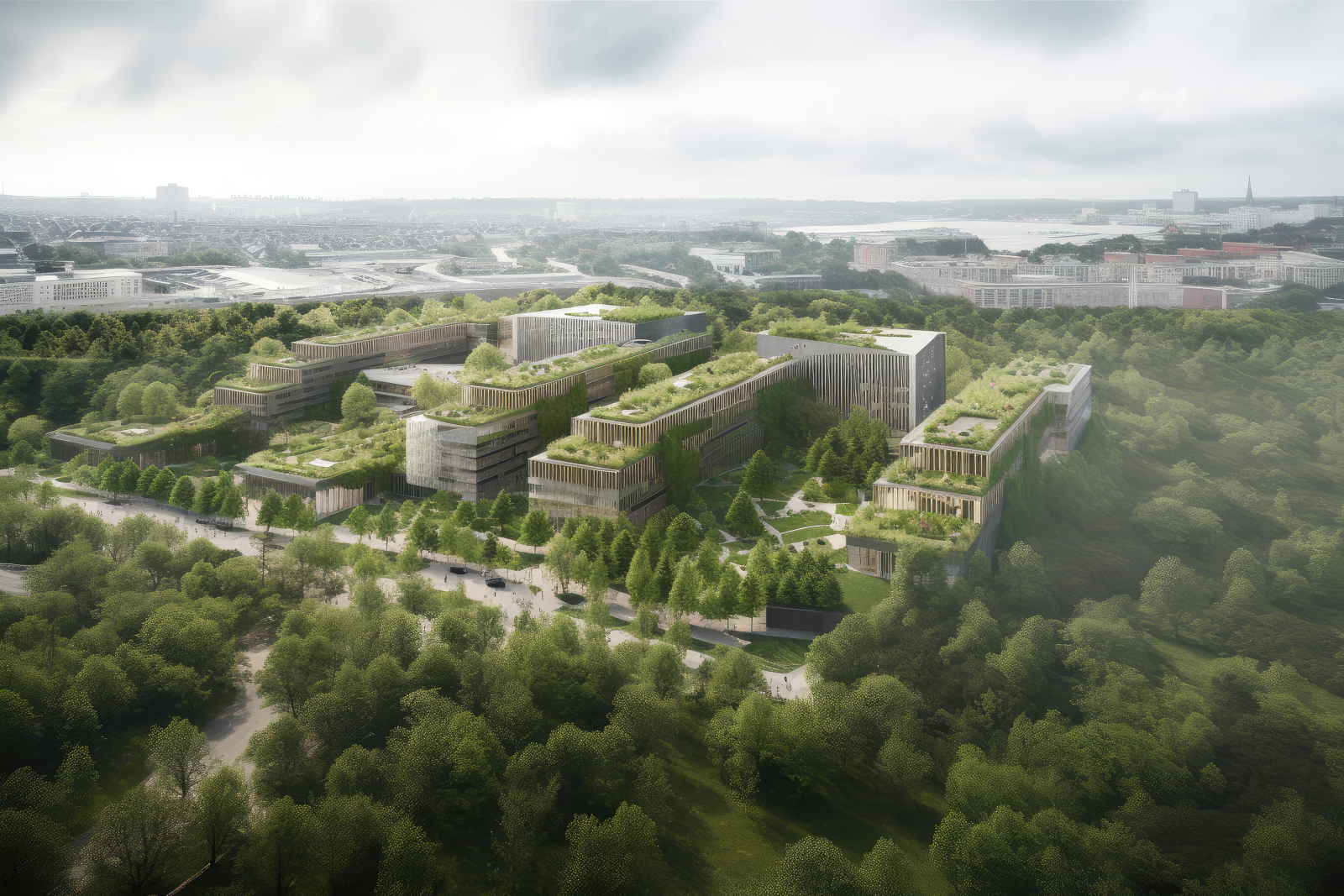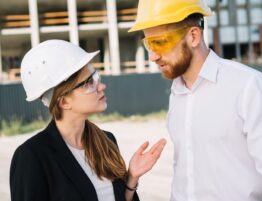
In recent years, drone technology has made it far easier to view aerial images of the UK’s urban landscape. But, while our towns and cities are hugely diverse in architectural character, looking down from above they are often very similar, with a common sight being a mass of black and grey roofs.
However, there is a trend which has started to add patches of colour to the aerial perspective – green roofing! In this week’s blog, we’ll explain more about what a green roof is and look at six reasons why this is proving to be a great option for our buildings.
What are green roofs?
Sometimes referred to as a ‘living, ‘vegetated’, ‘brown’ or biodiverse’ roof, a green roofing system involves creating a multi-layered system that supports the growth of living plants and vegetation on top of the conventional roof structure.
The layers typically include a waterproof membrane to protect the underlying roof structure from water infiltration, a root barrier to prevent plant roots from damaging the roof, a drainage layer to allow excess water to flow away, and a growing medium or substrate that provides nutrients and support for plant growth. Finally, the green roof is planted with a variety of vegetation which, depending on the design and load-bearing capacity of the roof, can range from low-growing grasses and sedums to shrubs and even small trees.
Looking great and offering a range of environmental and practical benefits, green roofs can be (and are increasingly being) installed in residential, commercial, and industrial developments.
Why choose a green roof?
Overall, green roofs offer a sustainable and aesthetically pleasing way to enhance buildings while mitigating the environmental impact of urban development. Here are six of their key benefits:
1. Thermal performance
Poor insulation has long been a primary challenge with conventional roofs. In the past, this has often resulted in buildings that suffer from significant heat loss during the winter months whilst being uncomfortably hot in summer.
One of the key benefits of implementing a green roof is that it will boost the thermal performance of a building. In effect, the green roof acts as a natural insulator, absorbing the sun’s energy so as to reduce the temperature of the roof when that’s needed in summer and providing an extra layer of insulation that locks heat inside during the colder seasons.
2. Better for the environment
The UK government has set a target of reaching Net Zero on carbon emissions by 2050. However, with 19% of the UK’s carbon footprint being emissions coming from the energy we use to heat, cool and power our buildings, this represents a big challenge for the built environment sector.
Green roofing can help. Because of the thermal benefits mentioned above, green roofs reduce the energy consumption associated with heating and air conditioning within a building, thereby reducing emissions. In large towns and cities, green roofing also helps to lessen what’s known as the urban ‘heat island’ effect. By absorbing and deflecting sunlight, this reduces heat build-up on the roof and within the surrounding area.
3. Improved drainage
Global warming has heightened the risk of excessive rainfall and flooding in many parts of the UK. This means that sustainable drainage has become a vital element in building design.
Traditionally, water control has relied on a network of pipes which are connected to the sewage system. However, with the rapid expansion of urban areas, as much as 75% of water now runs off into these developed regions.
Directly addressing this problem, green roofs absorb and store rainwater within the plants and substrate, then release it naturally back into the environment. As well as playing a crucial role in managing stormwater runoff, a green roof helps to relieve the burden on existing drainage systems.
4. Improved air quality
In studies carried out by the non-profit group, the Central Office of Public Interest and Imperial College London, more than 97% of UK addresses exceed the World Health organisation’s (WHO) limits for at least one of three key air pollutants like nitrous dioxide.
The WHO says air pollution is the biggest environmental threat to human health and, in the UK, it is estimated that about 40,000 premature deaths are linked to air pollution each year.
By absorbing carbon dioxide and filtering pollutants, a green roof can contribute to better air quality. For example, research in Singapore showed that the substrate and vegetation used in a green roof could capture up to 37% of sulphur dioxide (a noxious acidic gas) from the air.
5. Supporting wildlife
Another key advantage of green roofing is that it can provide thriving habitats for birds, insects, and other wildlife, thereby promoting biodiversity in urban areas.
Depending on the type of vegetation used, green roofing can support a range of wildlife eco-systems. One study of eleven green roofs in Switzerland found 172 different species!
6. Longer lifespan
Our roofs have to perform well in the face of the various elements the UK weather throws at them – wind, rain, snow, ultraviolet light, and temperature fluctuations. Given this challenge, many homeowners and businesses are keen to find options that extend the life of their roofs and reduce the need for repairs.
With a green roof, the layer of vegetation acts as a protective barrier, shielding the underlying waterproof membrane. This added protection ensures that the roof remains durable and can withstand the test of time for several decades, enhancing its overall lifespan.
Are there any drawbacks?
Whilst there are clearly multiple benefits to installing a green roof, there are a few things which might be considered a drawback. The primary concerns are that, because green roofs are heavier, they can require more structural support to be implemented and this can add slightly to the cost.
In our view, there are no real drawbacks that outweigh the advantages of green roofing and perhaps we’ll soon be living in a time when the aerial shots of our towns and cities show a sea of green roofs in place of the black and grey!
Sheriff Construction is proud to have installed many of these systems across a wide range of projects for our clients. Visit the flat roofing section of our online portfolio to see some examples.
Find out more about our green, brown and biodiverse roofing services.
05.06.2023
Feature image: Freepik








